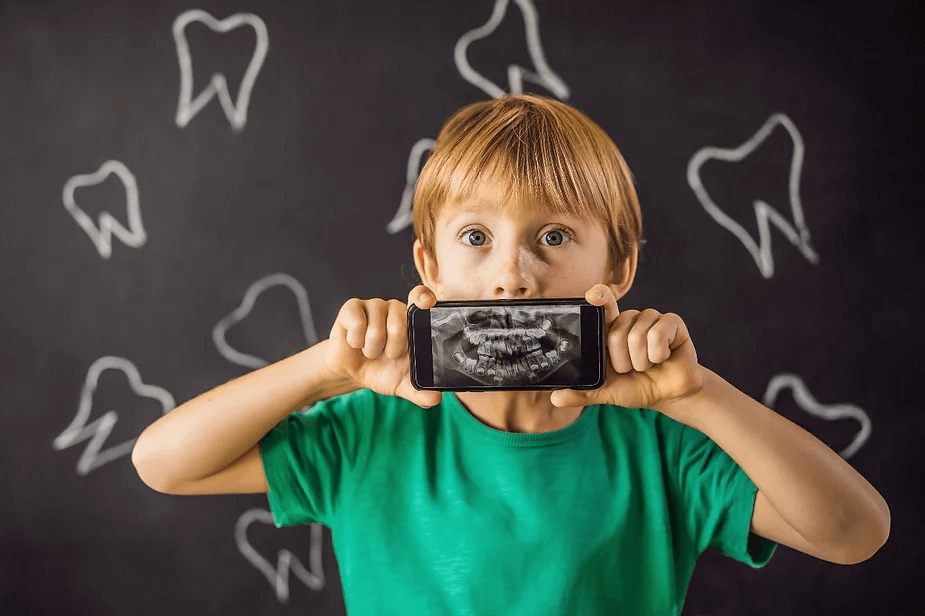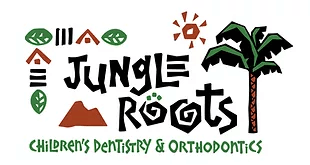Are Dental X-rays Really Necessary?

Dental X-rays are a part of the process of maintaining optimal oral health and are usually part of the appointment, whether you visit the dentist for the first time or for one of your bi-annual well check-ups. But how do they benefit the dentist and you? Are they necessary? What is safe? What are the risks? The information on these topics will help you feel more comfortable with dental X-rays, which are an integral part of your dental health.
What are Dental X-rays?
Just as an x-ray can identify irregularities in a long bone in your body or a tiny fracture in one of your fingers, dental x-rays can show abnormalities in your mouth. Dentists cannot visualize some parts of the teeth or jaws or gum diseases with just a visual oral exam. The x-rays can help us find and treat dental issues in the teeth and tissues of the mouth early, saving time, money, and discomfort later.
X-rays of the adult mouth can be used to identify:
- Areas of decay not seen on an oral exam
- Decay beneath an existing filling
- Bone loss from gum disease
- Changes in the bone or the root canal that result from an infection
- Assist in placing implants, braces, dentures, or other dental appliances
- An abscess (an infection between the tooth and gum or at the root of a tooth)
In a child, an x-ray can do all of the above and:
- Watch for decay in baby teeth (Very important, as they have thinner enamel than adult teeth!)
- Monitor the mouth for space to fit all of the incoming teeth
- Ensure primary teeth are lost in a timely manner and that the permanent teeth have room to come in
- Watch the development of wisdom teeth and make sure impacted teeth (when they are unable to break through the gums) are not going to be an issue
- Reveal abnormalities as they develop
Whether a child or an adult, x-rays are integral to your dental health and beneficial to your dentist and orthodontist. Luckily, they are quick and painless! Our team is happy to answer any questions you have and discuss the advantages of this essential tool in regards to helping maintain a healthy mouth.
When and Why Are X-rays Needed?
Dental x-rays are usually performed on a healthy person every year as part of your bi-annual visits. Brand new patients will undergo x-rays so we can get your baseline. This will give us a clear picture of your mouth, whether you’re healthy or if you are seeing us for a particular problem that has emerged. If you are new to our dental practice, you can bring your previous x-rays to our office for our staff to review.
From your first visit to those in the future, certain factors that may affect how often you will get dental X-rays, such as:
- Age
- Current oral health
- Symptoms of oral disease
- History of gum disease (gingivitis) or any tooth decay
Children may need x-rays more often than adults so that our dentists can monitor the growth of their adult teeth and any potential complications.
Orthodontists will also need specific X-rays, as they can show us a multitude of other things, including the placement of your jaw, the composition of the facial bones, and the condition of your teeth and roots. Seeing the jaw bones and permanent teeth is usually vital when the orthodontist creates a treatment plan.
Many people have more frequent dental x-rays due to their oral habits. Those that are smokers can be at increased risk for gum disease. Those who drink a lot of sugary foods or beverages can increase tooth decay risk. Bone loss monitoring is another purpose for those with periodontal disease. If you've had a lot of restorative work in the past, such as fillings or crowns, you may need more X-rays.
Dry mouth conditions are conducive to tooth decay. If you suffer from dry mouth due to medications, or other health conditions, you may need more frequent X-rays because you are likely to be more prone to dental caries. Damaged salivary glands, Sjogren's syndrome, or past or present radiation treatments to the throat or head may cause dry mouth.
Are Dental X-rays Safe?
When you have an x-ray of your mouth, the x-ray's energy travels through the designated area, indicating dense objects by light-colored areas on the x-ray film. When they pass through tissues like the cheeks and gums, these areas are dark. It is all related to the absorption of energy by the structures.
To show these structures, a specific amount of low-level radiation is emitted to show the structures in the mouth. Dental x-rays are safe, and radiation exposure is strictly monitored. The ALARA (As Low As Reasonable Achievable) principle is used to ensure radiation is limited. You will be asked to wear a leaded apron or thyroid collar to shield the thyroid and the abdomen. Although women should tell their dental team if they are pregnant, even early on, the American College of Obstetricians and Gynecologists states that dental care, including dental X-rays, is safe during pregnancy. The leaded apron and collar protect both you and the growing baby. It is not a good idea to delay dental treatment if you are pregnant or breastfeeding, as your oral health can impact your baby’s long-term health.
Types of Dental X-rays
X-rays for dental purposes come in two different types.
Intraoral X-rays - X-ray film in the mouth. It is the most common of dental X-rays. These x-rays are very detailed and allow the dentist to:
- See cavities
- See the tooth root and the bone surrounding it
- Check the status of teeth that are developing
- Observe the general health of the teeth and jawbone/li>
These X-rays are divided into more specific types:
- Bite-wing – show details of the upper and lower teeth in a particular area of the mouth. They detect decay, show how the upper and lower teeth line up when biting down, and show bone density changes caused by gum disease. Many dentists use this type of X-ray to fit a crown properly or check the marginal integrity of fillings.
- Periapical – show the entire tooth from the crown to the end of the root where it is anchored in the jaw. Each one shows the full dimension of the tooth and includes all the teeth in one small portion of the upper or lower jaw. They are used to detect irregularities in the root or surrounding bone structures.
- Occlusal – larger and shows the full development of the tooth and its placement. It reveals the entire arch of the teeth in the upper or lower jaw and can show a child’s teeth that have not surfaced through the gum.
Extraoral X-rays – X-ray film is outside the mouth. The most common focus of the extraoral X-ray is the jaw and skull. These are often used to create panoramic x-rays, in which a rotating arm circles around the face to take a single image of all the teeth. These are not as detailed as the intraoral X-rays but can be used to:
- Look for impacted teeth
- Keep track of the growth and development of the jaws
- Identify problems with teeth, jaws, and the temporomandibular joint (TMJ), or other facial bones
Digital X-Rays – are sent directly to a computer. Their advantages are many. It can be seen onscreen within minutes of being taken and can be enhanced or enlarged to make it easier for your dentist to see even tiny changes. Digital imaging also uses less radiation than traditional X-rays - up to 80% less! Many dentists, including us, have transitioned to digital x-rays because of the many benefits.
Smile for the X-ray!
At Jungle Roots Dentistry and Orthodontics, we want you to feel safe and comfortable with any test or procedure we do. Our teams will be happy to discuss any concerns or answer your questions regarding the need for dental X-rays. You and your family are the focus of our practice, and we want you to be confident that we are doing everything to keep you safe and secure in our offices. We use only the methods necessary to provide optimal dental care. Our dentists, orthodontists, and staff are fully trained to use the tools and equipment, and we go above and beyond adhering to the highest standards in safety to ensure you get the best oral care. We look forward to providing excellent service for you and your family!

At Jungle Roots Children’s Dentistry & Orthodontics, we strive to provide the highest comprehensive pediatric and orthodontic dental care in a unique, fun-filled environment staffed by a team of caring, energetic professionals. We believe the establishment of a “dental home” at an early age is the key to a lifetime of positive visits to the dentist.
Call Us - (480) 759-1119
Sources:
- Nazario, B. Dental X-Rays. WebMD. April 19, 2021. Accessed August 1, 2022. https://www.webmd.com/oral-health/dental-x-rayss
- Krans, B, Frank, C. Dental X-Rays. Healthline. Updated September 29, 2018. Accessed August 1, 2022. https://www.healthline.com/health/dental-x-rays
- Dental X-rays. Cleveland Clinic. November 18, 2019. Accessed August 1, 2022. https://my.clevelandclinic.org/health/articles/11199-dental-x-rays
- X-rays. Mouth Healthy. American Dental Association. Accessed August 1, 2022. https://www.mouthhealthy.org/en/az-topics/x/x-rays


















